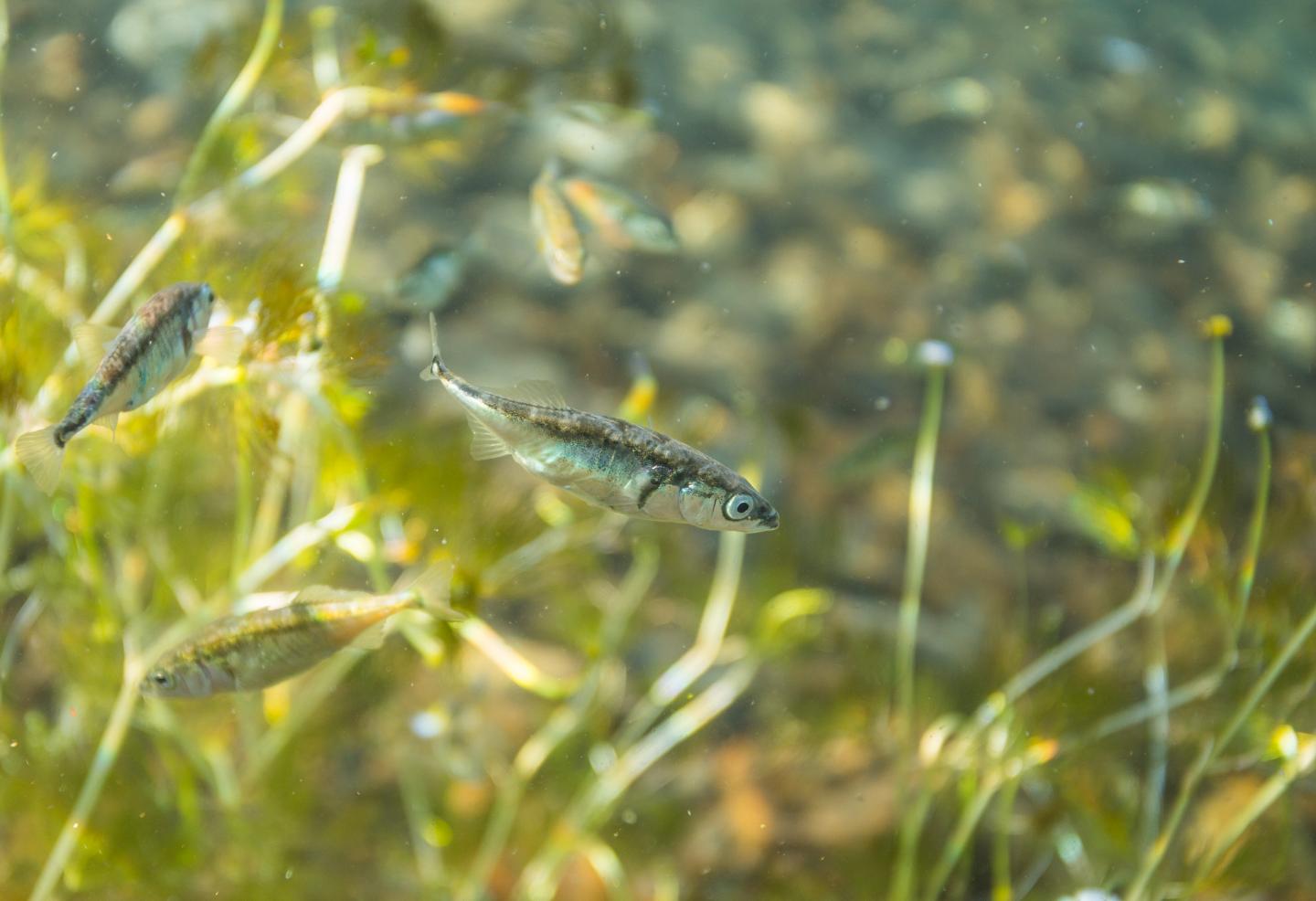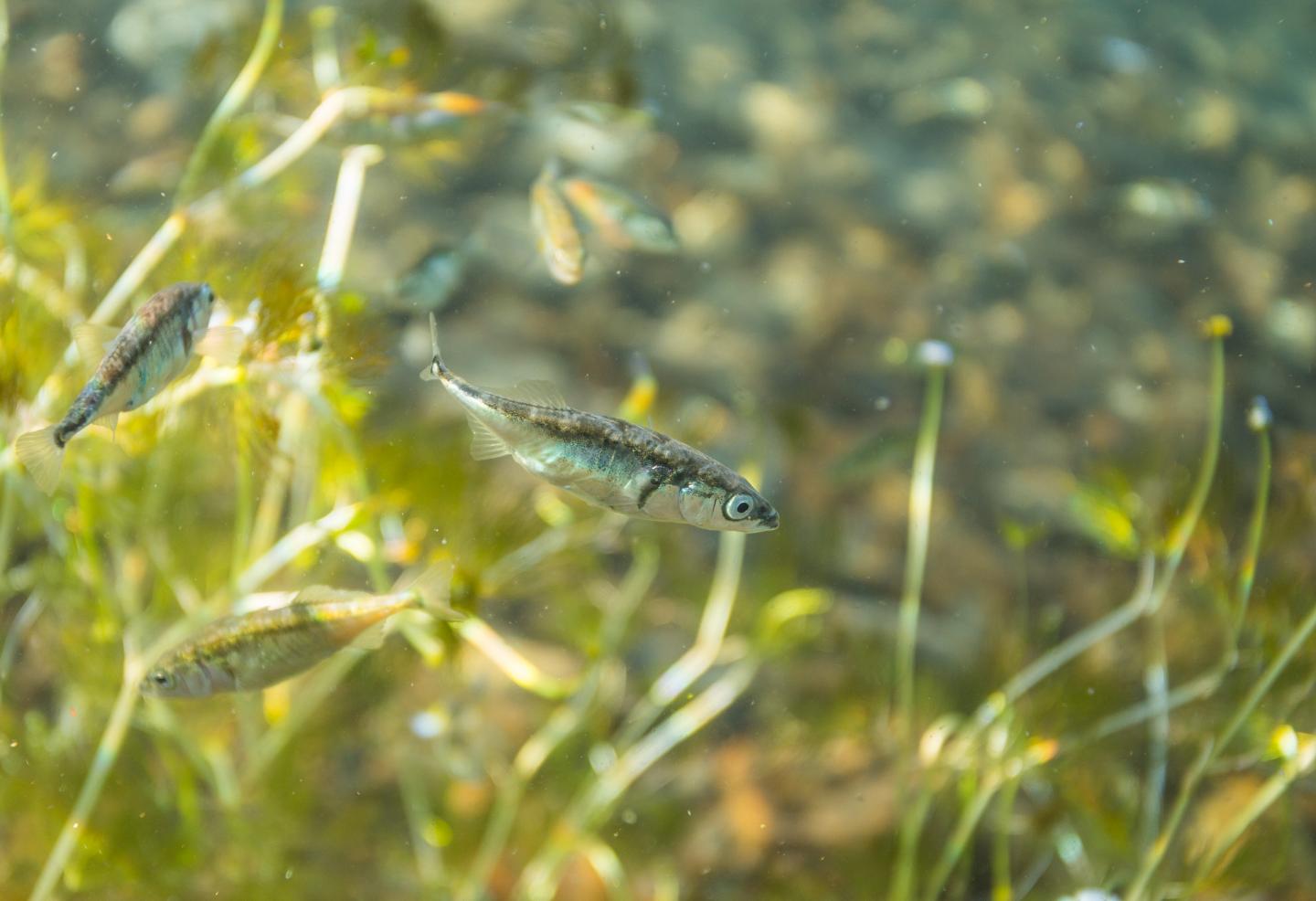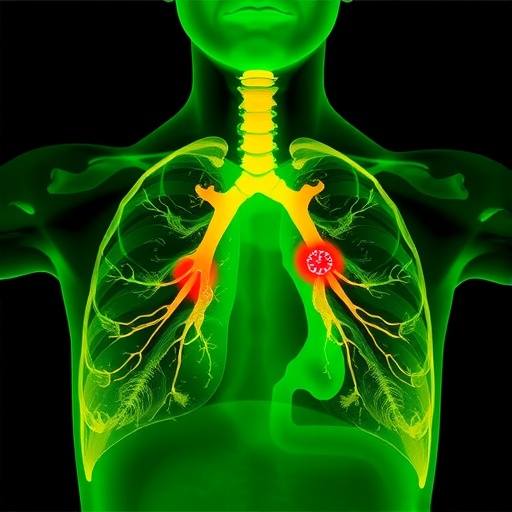
Credit: Jason Ching/University of Washington
One of Alaska's most abundant freshwater fish species is altering its breeding patterns in response to climate change. This could impact the ecology of northern lakes, which already acutely feel the effects of a changing climate.
That's the main finding of a recent University of Washington study published in Global Change Biology that analyzed reproductive patterns of three-spine stickleback fish over half a century in Alaska's Bristol Bay region. The data show that stickleback breed earlier and more often each season in response to earlier spring ice breakup and longer ice-free summers.
While several papers have speculated that conditions brought on by a warming climate may allow animals to breed more often in a single year, this has only been empirically shown in insects. This study is the first to document multiple breeding cycles for fish in a single season due to climate change, said lead author Rachel Hovel, a postdoctoral researcher in the UW's School of Aquatic and Fishery Sciences.
"The exciting thing about this paper is that it shows, for the first time, the emergence of multiple breeding in a vertebrate as a response to climate change," Hovel said. "Climate change literature features many predictions and vulnerability assessments, but we don't have many opportunities to actually observe species' responses over time, as this is very data-intensive. Our ability to detect multiple breeding in fish is attributed to our comprehensive and high-quality long-term dataset."
The data were collected from 1963 to 2015 in Alaska's Lake Aleknagik, home to one of the UW's Alaska Salmon Program research stations. The research program has for decades recorded the abundance of juvenile sockeye salmon and other fish that live in the region's freshwater lakes. For 52 years, fish were captured in nets along the lakeshore at 10 different sites every seven days between June and September. All fish were identified and measured.
While the program's monitoring was designed to track the commercially important sockeye salmon population, scientists also meticulously recorded every other fish present, including three-spine stickleback. Stickleback represent almost half of the fish found in Lake Aleknagik, with juvenile sockeye salmon nearly matching that percentage. Three-spine stickleback make up a large percentage of the fish communities in many northern lakes, so these findings could be relevant throughout the region, Hovel said.
"Alaska is warming about twice as rapidly as most of the rest of the planet," she said. "These fish are adapted to survive in relatively cold environments with limited productive seasons. The responses to rapid warming that we see in lakes, like early spring ice breakup, are releasing some of these constraints."
Stickleback are born near the shore, then move to the middle of the lake to feed on zooplankton. Adults return to the shore in the summer to spawn; males will build the nest and attract a female, who then lays the eggs. Males guard the nest until the fish hatch, usually after about two weeks.
By analyzing decades of data showing fish sizes throughout each summer, Hovel and collaborators could determine roughly when certain fish were born ? a larger fish captured in August was indicative of an early season brood, while a smaller fish captured on the same day likely came from a brood that hatched later in the summer.
Using these data and additional environmental data, researchers found that three-spine stickleback spawned earlier in years when ice breakup occurred earlier, and in some years, the fish produced more than one brood. Given the short summers in Alaska, most stickleback have time and stamina for only one brood, but increasingly they are rearing two broods a summer as climate change ushers in earlier springs.
These factors could have wider ecological effects, as three-spine stickleback are a dominant fish species in many northern lakes. This is particularly true for sticklebacks' primary competitor in many coastal lakes in Alaska: juvenile sockeye salmon. The two species share the same habitats in lakes and generally eat the same things.
"If stickleback are increasing in abundance because of their modified reproduction strategy, this can have ecosystem implications for the productivity of species we commercially care about, like sockeye salmon," Hovel said.
Researchers don't yet know if breeding more often and earlier in life is beneficial for three-spine stickleback, but it does appear that over the long term, the fish will likely increase their abundance.
"We don't know exactly what this means for demographics of this species," Hovel explained. "It could also mean that fish are living shorter lives because there's a higher physiological cost to breeding more than once. In the lower-latitude extent of their range, fish mature earlier and die earlier."
###
Other co-authors are Thomas Quinn, a UW professor of aquatic and fishery sciences; and Stephanie Carlson at University of California, Berkeley, who earned her doctorate at the UW and worked with the Alaska Salmon Program.
Data collection for this study was funded by the Pacific Salmon Seafood Industry, the Gordon and Betty Moore Foundation, the Alaska Department of Fish and Game and the National Science Foundation. Hovel's analysis was funded by the H. Mason Keeler and Richard and Lois Worthington endowed professorships.
For more information, contact Hovel at [email protected] or 206-616-5761.
B-roll available: https://flic.kr/p/QLPCfo
Images available: https://flic.kr/s/aHskMcjwzy
Media Contact
Michelle Ma
[email protected]
206-543-2580
@UW
http://www.washington.edu/news/
############
Story Source: Materials provided by Scienmag





